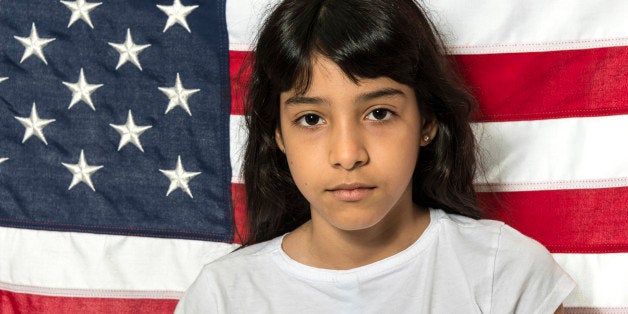
U.S. Central America Aid Built on a Policy of Deporting the Vulnerable
Why do Washington policymakers frame the arrival of children and families fleeing organized violence in their countries as a threat to national security? Is it possible to restore compassion to our debate about this kind of immigration?
The billion-dollar aid package for Honduras, Guatemala and El Salvador proposed by the Obama administration last month raises these questions in an urgent way. The proposal has prompted responses ranging from the highly skeptical to the all-out enthusiastic. Critics have focused on the amount of money, corruption, and likelihood of waste. Supporters, starting with Vice President Biden, point to the need to address violence and its causes in Central America.
The package would be the largest for the region since the wars supported by the United States in the 1980s that took the lives of hundreds of thousands of people -- part of the legacy that's generated the current crisis. Most of the funds would go for unspecified economic assistance in countries run by corrupt regimes, but counter-drug funds for Central American police would be more than doubled from 2014 levels.
What's received no attention, however, is recent legislation that the proposal is supposed to address. Before leaving Washington for Christmas in December, lawmakers approved a spending bill that included new language on "Central American migration prevention and response." This was Congress' reaction to the influx of thousands of Central American children and families who fled violence and arrived in record numbers at U.S. borders last summer. Many children face the bleak choice of either joining a gang and risking a violent death, or refusing to join -- and risking a violent death.
The legislation is entirely focused on preventing and deterring children's immigration and deporting those who make it out of Guatemala or Honduras. It is painful to read, because it is so manifestly cruel, but it is also instructive about a principal political driver of these programs.
Congress required the State Department to submit a strategy within three months that would "address the need for greater border security for the countries in Central America and for Mexico, particularly the southern border of Mexico." The strategy must also "support repatriation facilities for the processing of undocumented migrants returning from the United States" as well as "combat human trafficking in Central America." But it made not a single mention of refugee status or political asylum for Central Americans fleeing a credible fear of persecution, even though asylum seekers typically must pay illegal traffickers in order to get out of harm's way.
The legislation also said the strategy should include social and economic aid, but made continued delivery of all aid contingent on certification that Central American governments are beefing up border security, "inform[ing] potential migrants of relevant United States immigration laws," and cooperating with the United States to receive deported families and children.
Mexico deported a record 47,000 Central American women and children last year, in response to what most observers see as U.S. pressure on Mexico's submissive Peña Nieto government. Mexican bishops have condemned the deportation program, called "Plan Frontera Sur," saying it has only dispersed Central American migrants to other routes. The plan invests hundreds of millions of dollars in high-speed train rail -- in order to prevent migrants from getting on "La Bestia," the cargo train that many have taken north. But while the journey on "La Bestia" was risky, dispersing migrants will make them even more vulnerable, say Mexican advocates, "making the hunt for migrants in Mexico official."
Now, the State Department has committed at least $86 million, on top of the billion-dollar plan, for military bases, roadblocks and sensors at Mexico's southern border with Guatemala and Belize, and the Pentagon is also deploying troops to help militarize borders.
As U.S. senators and editorial boards were weighing in on the Central America package, the U.S. Marine Corps announced it was sending 250 Marines to Honduras on a permanent mission to train local militaries in the interdiction of drugs and people, and with the "goal of legitimizing host nations' militaries." It's the largest long-term deployment of U.S. Marines in the region since the 1930s, when they occupied Nicaragua and Haiti.
Some liberal observers have applauded the Central America proposal, because the percentage for military and police assistance in the massive package is less than in previous years, and because the rollout barely mentioned drugs. I am reminded that the drug war is not so much about combat against substances; it's more about using police and military force to pursue people of color. In this case, it does not meaningfully discriminate between criminals trafficking in drugs and weapons, and immigrant children and families who are seeking asylum from relentless violence.
Even if the United States eventually contributes to reducing that violence -- far from a sure proposition -- our country has an ethical and legal obligation to give refuge to Central American families fleeing violence while their asylum claims are considered, not cage or deport them.